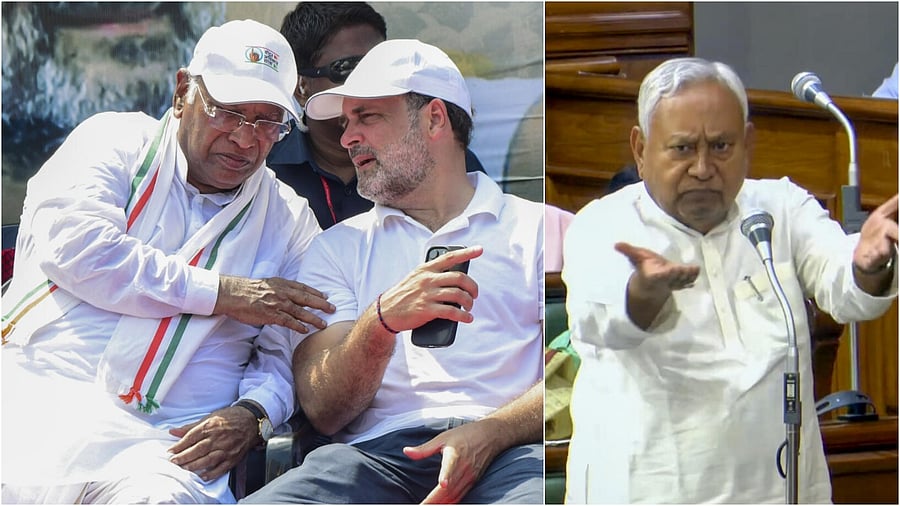
Congress chief Mallikarjun Kharge with Rahul Gandhi(L), Bihar Chief Minister Nitish Kumar
Credit: PTI Photos
The stage is set for a crucial Assembly election in Bihar, with the Election Commission of India (ECI) announcing the polling dates on Monday. The Commission has announced polling over two days – November 6 and 11 – and scheduled the counting of votes on November 14. A two-day polling schedule is a welcome departure from the multi-phase model which, sometimes, extends over weeks and delays the results. An extended schedule helps parties and leaders with more resources to campaign for a longer period, gaining an undue advantage in the process. This goes against the idea of fair elections. All parties have welcomed the election schedule. The announcement of dates will formally set their campaigns in motion.
Elections in Bihar carry import beyond the state as their outcome can influence national politics and trends in other poll-bound states. The JD(U), which is part of the NDA government in the state, extends crucial support to the Narendra Modi government at the Centre. Bihar is witnessing shifts in its political landscape. Chief Minister Nitish Kumar, after 20 years at the helm, is not the dominant force he once was, while ally BJP has grown more assertive. The Opposition Mahagathbandhan, led by RJD’s Tejashwi Yadav and consisting of the Congress and other parties, has risen in popular reckoning, and is likely to pose a challenge to the ruling coalition. Bihar will go to polls against the backdrop of ECI’s controversial Special Intensive Revision (SIR) of electoral rolls. SIR and the political messaging around the exercise are likely to shape voter attitudes and preferences. The opposition parties will hope to build on the encouraging response from the people to the statewide campaign against SIR, led by Yadav and Congress leader Rahul Gandhi.
For the NDA, there is a clear ruling-alliance advantage, extended with a favourable caste combination. Nitish Kumar is, still, identified with a record of sushasan (good governance). There is also the popular appeal of Prime Minister Narendra Modi. In the 2020 election, a mere 0.03% separated the vote shares of the NDA and the Mahagathbandhan. In 2025, the electoral outcome will hinge on the interplay of caste – a constant in Bihar polls – with the state’s new aspirations and its altered political equations. With freebies and welfare outreach in the form of cash incentives for women, the ruling coalition has set the tone for the campaign. Prashant Kishor’s Jan Suraaj Party, a new entrant in the fray, is unlikely to cause major disruptions in what is expected to be a close fight between the two alliances.
